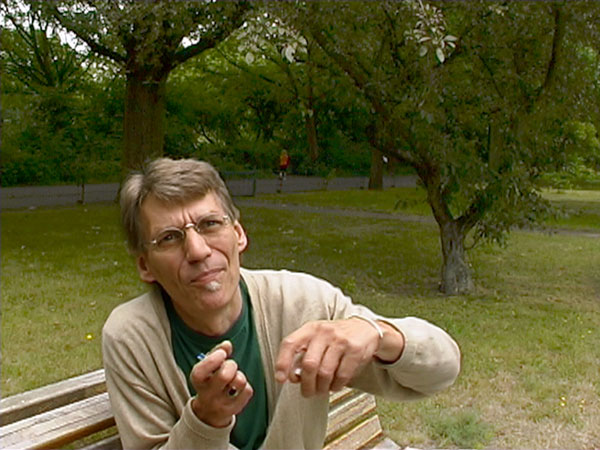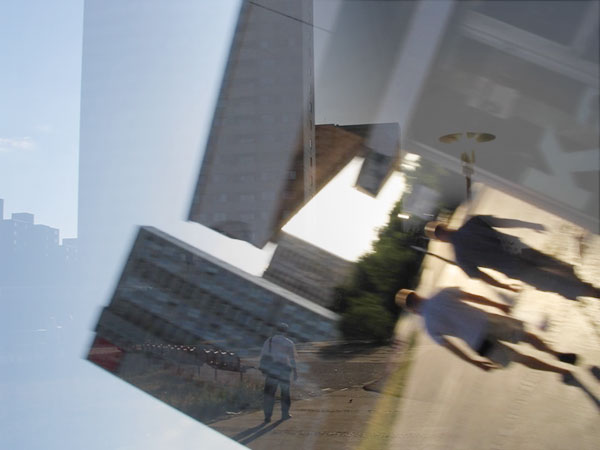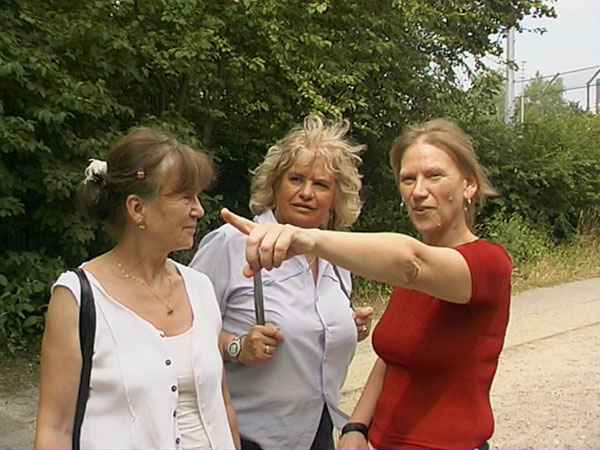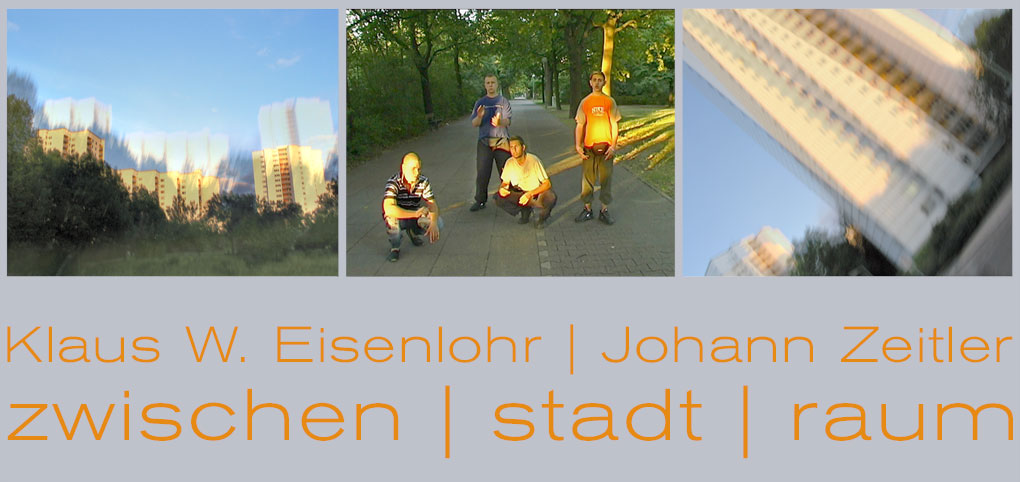
Gemeinschaftshaus Gropiusstadt, Kleiner Saal
Bat-Yam-Platz 1
12353 Berlin
Videoarbeit
von Klaus W. Eisenlohr und Johann Zeitler



Im Jahr 2006 waren beide Künstler Gast des “Pilotprojekts Gropiusstadt”. Ausgerüstet mit der Kamera als Werkzeug der Interaktion suchten sie Begegnungen und Gespräche mit Gropiusstädtern, mit Menschen, die in der Öffentlichkeit aktiv sind oder einfach den öffentlichen Raum in Anspruch nehmen. Aus dem umfangreichen Videomaterial entstand eine Komposition von Eindrücken, von Statements über Gropiusstadt und den städtischen Raum als dreikanalige Videoinstallation.
Es geht in der Arbeit um Wahrnehmungsprozesse, aber auch um Konstruktionen und Repräsentationen des städtischen Raums: Wann ist öffentlicher Raum? Wie wird städtischer Raum gesehen, genutzt und dargestellt? Wie wirken Architektur und soziale Konstruktion zurück auf das alltägliche Leben, auf Sinne und Körper? Welche Arten von Interventionen ermöglichen eine veränderte Wahrnehmung?
“In der Videopräsentation kommen Gropiusstädter zu Wort: Bewohner unterschiedlicher Herkunft und verschiedener Generationen sprechen sowohl kritisch als auch positiv über ihre Umgebung und zeigen ihre Verbundenheit mit dem Stadtteil. Diese Wahrnehmung wird ergänzt durch die Wahrnehmung der Künstler, die von außen kommen und die Gropiusstadt erstmals und unvoreingenommen erlebt haben.”
“Sie waren in Parks unterwegs, auf dem Wildmeisterdamm, in den hiesigen Straßen und Grünanlagen. Und sie haben viele Menschen getroffen und sie gefragt: Wie erleben Sie den öffentlichen Raum hier in der Gropiusstadt? Gefällt Ihnen die Gestaltung der Anlagen? Was hat sich verändert, seit Sie hier wohnen? Wo fühlen Sie sich sicher bzw. unsicher? Und sie haben die Jugendlichen gefragt, die sie auf den Straßen getroffen haben: Was macht Ihr draußen? Gibt es hier bestimmte Treffpunkte, spezielle Orte für Euch? Wo ‘hängt man ab’ in der Gropiusstadt? Wo ist was los?” (Walter 02/08, Gropiusstadt Magazin)
Die Aussagen zur Vergangenheit, Entwicklung und dem Heute der Gropiusstadt lassen auch darüber nachdenken, welche der vielgeschmähten Konzepte der Moderne und des Planers Walter Gropius neu zu bewerten wären. Gropiusstadt, die Ikone der Moderne Berlins, jedenfalls erscheint im Film vielfältig, widersprüchlich und lebenswert.
Die Filmaufnahmen wurden ermöglicht im Rahmen des Pilotprojekts Gropiusstadt, gefördert von der GEHAG GmbH. www.pilotprojekt-gropiusstadt.de
Besonderen Dank an: Birgit Anna Schumacher & Uwe Jonas (Internationales Künstlerresidenzprogramm “Pilotprojekt Gropiusstadt”), Harald Ramm, Mathias Geyer
(Click here for English text!)
Links:
![]() Einladung als PDF
Einladung als PDF
![]() Artikel in “Walter” Gropiusstadt Magazin (pdf download)
Artikel in “Walter” Gropiusstadt Magazin (pdf download)
![]() Presseerklärung
Presseerklärung
